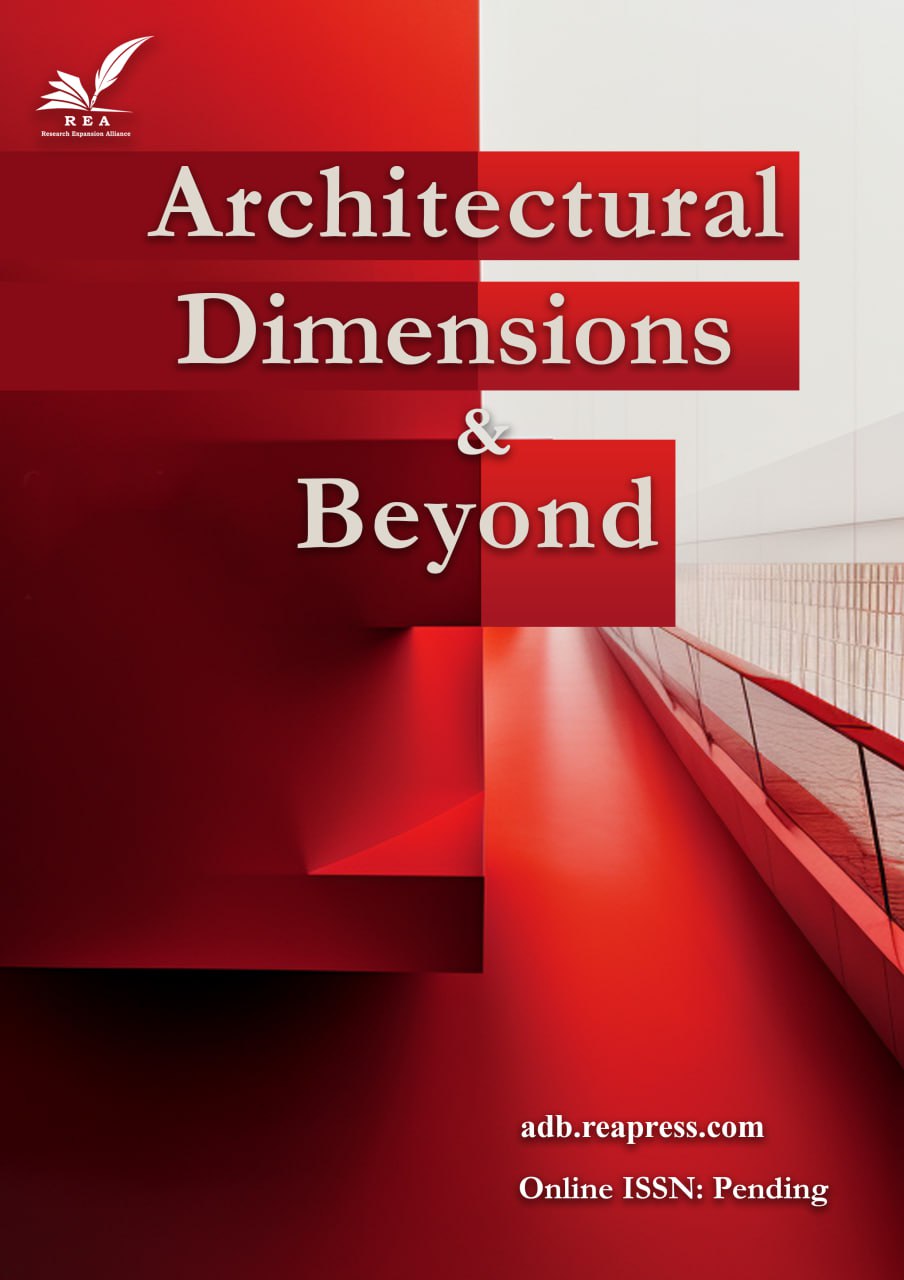The Connection Between Western Mazandaran's Indigenous Music and Architecture-Focused on Cultural Identity and Sensory Experience
Abstract
The intricate interplay between architectural space and indigenous music in Western Mazandaran profoundly reflects the region's cultural identity. This study aims to explore the defining characteristics of Mazandaran's indigenous music while assessing the role of architecture in enhancing and preserving this musical heritage. The central inquiry investigates how architectural designs can be inspired by the principles of indigenous music to create spaces that offer enriching and meaningful experiences aligned with the local culture. Employing a descriptive-analytical approach, this research integrates qualitative and quantitative methodologies to analyze the reciprocal influences of architecture and music in shaping cultural and social identity. The results indicate that architectural elements rooted in the rhythms and melodies of indigenous music can foster environments that promote cultural connectivity and community engagement. Moreover, the findings underscore the importance of preserving traditional architectural spaces while deriving inspiration for contemporary designs. By marrying architectural innovation with indigenous musicality, this research asserts the necessity of facilitating the transmission of cultural heritage to future generations. Ultimately, the study presents a blueprint for designing cultural and artistic spaces that resonate with the principles of indigenous music, emphasizing their potential to serve as vibrant centers for cultural education and social cohesion.
Keywords:
Indigenous music of western Mazandaran, Cultural identity, Sensory experience, Eometric proportions, Aesthetics, Music and architectureReferences
- [1] Mojtabavi, S., Damghan, I., & Mojavery, M. S. (2016). Mazandaran Ritual Music Influenced the Local Architecture. https://www.academia.edu/download/56277014/4_IJIREM327.pdf
- [2] Good, A., Sims, L., Clarke, K., & Russo, F. A. (2021). Indigenous youth reconnect with cultural identity: The evaluation of a community-and school-based traditional music program. Journal of community psychology, 49(2), 588–604. https://doi.org/10.1002/jcop.22481
- [3] Hillenbrand, R. (1994). Islamic architecture: form, function, and meaning. Columbia University Press. https://archive.org/details/islamicarchitect0000hill_h4x4
- [4] Xenakis, I., & Kanach, S. E. (2008). Music and Architecture: Architectural Projects, Texts, and Realizations. Pendragon Press. https://cir.nii.ac.jp/crid/1130000795316257920
- [5] Hegel, G. W. F., & Hegel, G. W. F. (1998). Aesthetics: Lectures on fine art (Vol. 1). Oxford University Press. https://books.google.com/books
- [6] Norberg, C.-N. (1980). Genius loci: towards a phenomenology of architecture. https://www.amazon.com/Genius-Loci-Towards-Phenomenology-Architecture/dp/0847802876
- [7] Scruton, R. (1997). The aesthetics of music. Oxford University Press. https://global.oup.com/academic/product/the-aesthetics-of-music-9780198167273
- [8] Posht, A. M. K. R., Daneshjoo, K., & Shemirani, S. M. M. (2020). Native house designing pattern recognition in Mazandaran province with climatic approach. Nexo scientific journal, 33(02), 378–391. https://revistasnicaragua.cnu.edu.ni/index.php/nexo/article/view/6564
- [9] Spence, C. (2020). Senses of place: architectural design for the multisensory mind. Cognitive research: principles and implications, 5(1), 46. https://link.springer.com/article/10.1186/s41235-020-00243-4
- [10] Bagheri, M. R. Survey of citizens’ interest to native architecture case study: Sari City. International journal of engineering research & technology (IJERT), 9(6). https://www.ijert.org/survey-of-citizens-interest-to-native-architecture-case-study-sari-city
- [11] Shokri, S., & Jafari, amin. (2014). The influence of mazandaran ritual music on the native architecture of the mazandaran region. The first national conference on sustainable development in geography and planning, architecture and urbanism. Civilica. (In Persian). https://civilica.com/doc/336827


